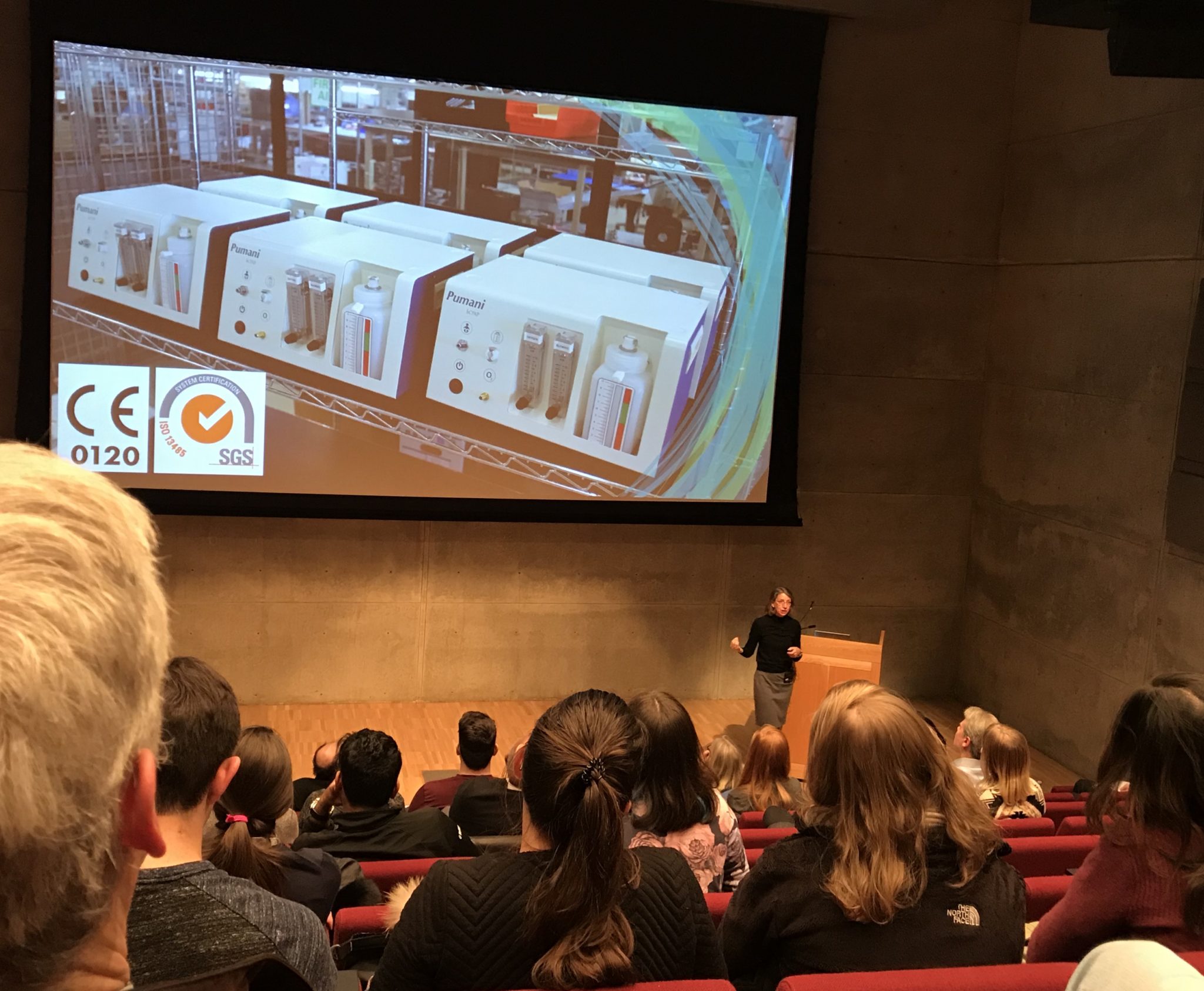
Rice University bioengineering professor Rebecca Richards-Kortum on Tuesday gave a lecture about her work addressing preventable deaths of newborns in Africa in front of an audience of about 150 members of the Yale community.
In the 2018 Mrs. Hepsa Ely Silliman Memorial Lecture, Richards-Kortum spoke about developing low-cost lifesaving technologies for newborn babies in low-resource settings. One technology that her team has designed to help newborn babies breathe is now used in more than 20 countries. And on Wednesday morning, Richards-Kortum hosted a smaller, more focused seminar for members of Yale’s biomedical engineering department about the more technical aspects of her inventions.
“Without access to technologies that make comprehensive newborn care available, we’re stuck in the situation where it will be over 100 years before babies in Africa catch up to all of the benefits that babies born in high-income countries have,” said Richards-Kortum, a MacArthur fellow and elected member of the National Academy of Engineering and the National Academy of Sciences.
Established through an $80,000 donation in 1883 by Augustus Ely Silliman in memory of his mother ,Hepsa Ely Silliman, the Silliman Memorial Lecture brings an outstanding scientist, mathematician or engineer to Yale each year.
In 2005, Richards-Kortum established the undergraduate educational initiative Beyond Traditional Borders and two years later founded the Rice 360° Institute for Global Health. The programs have produced several student-designed technologies that address health care issues in developing countries.
One of the Institute’s major projects has been creating and implementing Newborn Essential Solutions and Technologies, an integrated group of 17 technologies aimed at treating common diseases and medical conditions facing newborn babies.
Although scientists have made much progress in the past few decades to reduce the number of childhood deaths worldwide, there has been less focus on addressing newborn deaths in particular, Richards-Kortum explained in her talk, noting that newborn deaths account for 45 percent of all childhood deaths.
In its 2015 Sustainable Development Goals, the World Health Organization set a global target of reducing neonatal mortality to at least as low as 12 per 1,000 live births by 2030. The goal, however, is a formidable challenge, based on recent historical data and projections, according to Richards-Kortum.
“If we are going to hit our target, we have to double the rate of progress that we’re making toward this goal,” Richards-Kortum said.
Other studies have found that it would take more than 110 years to achieve equity in neonatal mortality around the world, she noted.
Richards-Kortum’s interest in neonatal mortality began when she was teaching a senior capstone design course at Rice, according to Yale’s chair of biomedical engineering, Jay Humphrey, who helped organize Richards-Kortum’s visit. She recognized that improving health care outcomes in newborn babies would be a topic that would energize and interest her students, he said.
“Science and engineering is done by people for people,” Humphrey said. “What’s inspiring about what [Richards-Kortum] is doing is that she is focused on the ‘for people’ part.”
Richards-Kortum first targeted a newborn disease called respiratory distress syndrome, a breathing disorder that affects newborns and is common among premature infants.
In well-resourced countries, newborns are treated with a continuous positive airway pressure ventilator, which applies mild air pressure to keep airways open continuously. Unfortunately, traditional CPAP devices used in hospitals cost around $6,000 and require well-supplied air and oxygen sources.
Her team, which included several Rice undergraduates, developed a small, robust version of a CPAP device that has been implemented in many hospitals in Malawi. Nurses in Malawi named the device “Pumani” — which means “breathe restfully” in the Malawian language of Chichewa.
Using the technology in place of nasal oxygen — the usual form of treatment in Malawi — newborn survival improved from 24 to 65 percent, Richards-Kortum said.
She explained, however, that the device requires the simultaneous introduction of other essential neonatal technologies to achieve its maximum potential in Malawi and other low-resource settings. To this end, she said, she is now developing and implementing a technology that offers breathing support, temperature stability and blood diagnostics.
The package — a collaboration between Rice, the University of Malawi, Northwestern University, the London School of Hygiene & Tropical Medicine and 3rd Stone Design — is being introduced in hospitals throughout Africa, including in Nigeria and Tanzania.
“By making this package available, we have the potential to reduce [neonatal] death rates by half in the next decade and do it at an accessible cost,” Richards-Kortum said.
Richards-Kortum received a $5,000 honorarium for giving this year’s Silliman Memorial Lecture.
Amy Xiong | amy.xiong@yale.edu







